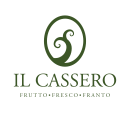An endless work around olive trees. The olive grove has almost one thousand trees of different varieties spread over steep terraces, on the side of Montalbano which looks out to the sea. The story of this farm in the heart of Tuscany, that has long devoted itself to a selective production of extra-virgin multivarietal olive oil, starts here among splendid olive trees, dry stonewalls, bushes of aromatic herbs and blackberries, as well as ancient ferns still growing in the cool undergrowth.
For one reason or another, three siblings, Franco, Fiorenzo and Fiorenza, father and uncles, were those who discovered this place beyond Montalbano in the 1970s. It was not particularly attractive at the time: the general opinion was that the estate was harsh and too steep, hence inconvenient and not well positioned. Moreover, there was a lot of work to be done to recreate the conditions to produce olives.
Maybe it was true, but the three siblings were not thinking of production: they just wanted a place where to spend time together, discuss, grow vegetables and satisfy their inclinations.
The equipment was manual, and there was great satisfaction when, after a whole day of work, there was an olive peeking through the brambles.





